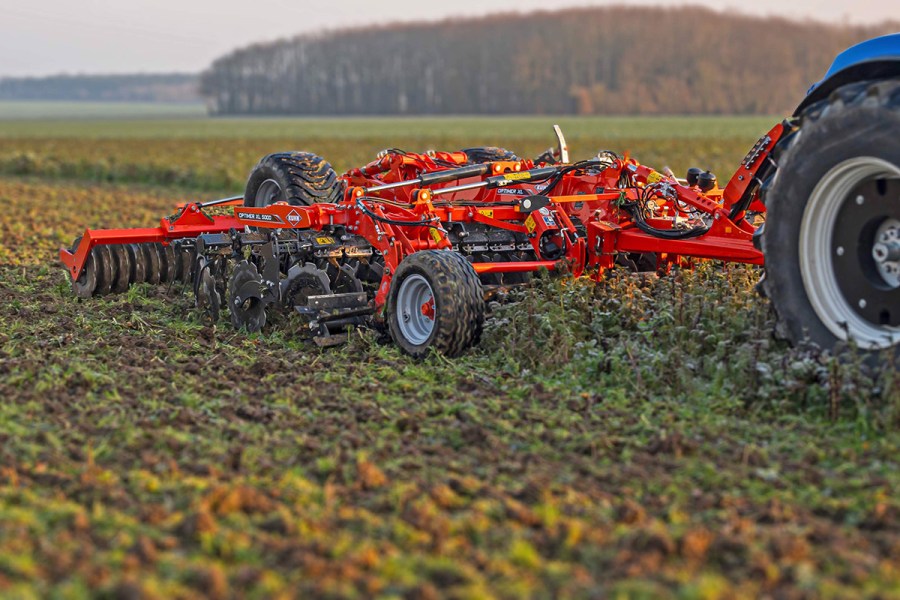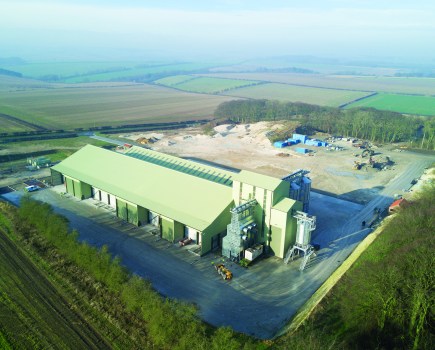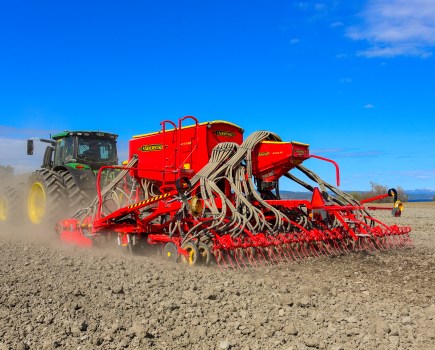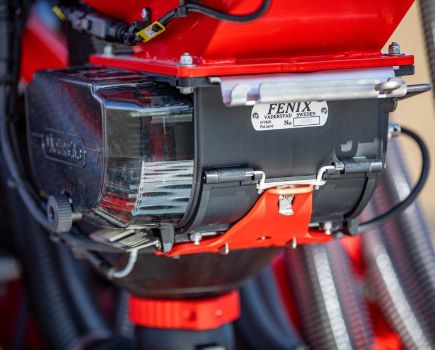Glyphosate has often been the primary tool for destroying cover crops ahead of spring cultivations, but mechanical destruction is gaining traction. CPM explores why and what options are available.
“The days of the bag and the bottle alone have gone.” – OLIVER WATSON
By Melanie Jenkins
The push to plant cover crops isn’t new, but achieving the best results from their destruction is something in the industry is still learning about. In addition, with increasing pressures to reduce glyphosate use, incorporating more mechanical means of destruction could provide an effective option.
In the past, growers might have sprayed off their autumn cover crops in November and December to ensure that plants were completely dead ahead of spring drilling, but because of new SFI obligations, destruction might be left until February, says Amazone’s Oliver Watson. “It could be that late January is the earliest growers are allowed to destroy crops and during this period you can’t guarantee a suitable spray window.”
One of the main reasons growers might opt for mechanical destruction is to cut out or reduce the use of glyphosate, says Horsch’s Gareth Burgess. “It’s about bringing the environmental thought process around to reducing chemical use.”
AVOIDING RELIANCE
Oliver is in agreement, noting that it’s important to manage glyphosate use because of pressures on the chemistry. “We don’t want to be solely reliant on it and instead should be using a hybrid system of cultural and agronomic controls so they work hand-in-hand.
“We wouldn’t ever tell a grower that a knife roller will replace glyphosate, but it must become part of their system – the days of the bag and the bottle alone have gone. And with weather conditions becoming increasingly diverse, it’s invaluable to have tools in your armoury that you can use when you can’t spray off a crop in time ahead of pre-drilling.”
The alternative option is to look at different means of incorporating destroyed cover crops into cultivations, he says. “Because over-wintered cover crops might have created a tight profile within soils, it’s likely you’ll want to go in with some type of light cultivation to bring air back into the soil and get the drying process started as fast as possible.
“With our Cobra tine cultivator, we can fit a knife roller at the front to provide mechanical cover crop destruction and spring cultivation in a single pass. With any knife rollers, the sharpness of the knives is important, but where soil conditions are softer, it’s more likely the cover crop stems will be crimped than cut. Because the crop is being lain down in the direction of travel, it means there isn’t a matted effect where the crop is dragged along,” says Oliver.
“And where crops are crimped and bruised, this will assist them breaking down, especially following a frost which will help to burst cells and aids with incorporation later on,” he adds.
This season has seen back-to-back frost which has been ideal for cover crop destruction, highlights Gareth. “If you go into a cover crop after a frost, the plants will be brittle and crimper rollers will have a better effect.”
Additionally, it might be unsuitable to apply glyphosate after a frost, says Horsch’s Will Flittner. “If you’re looking to destroy a cover crop early ahead of planting a cash crop, mechanical destruction allows greater flexibility than chemicals do.”
KNIFE ROLLER
A knife roller can be fitted to Horsch’s Joker RT range to serve this purpose. “It’s effectively a 300mm diameter Horsch Cultro cylinder with six knives mounted at the front of the RT cultivation discs.
When considering whether or not to fit this on a Joker, it comes down to if you’re trying to achieve the best of both worlds: encouraging a chit of weeds after the combine and then in spring going in after a frost to crimp cover crops and simultaneously incorporate it with the discs. Because of its versatility, it potentially allows growers to purchase a single machine instead of two.”
Amazone’s Cobra can also have a knife roller fitted as well as 220mm points which work with it to cut through roots and further destroy cover crops, explains Oliver. “This means you could destroy the winter cover crop and sow a spring cover crop all in one pass. This could also be done if moving from a spring to summer cover crop, but an application of glyphosate might be required pre-drilling.
“However, rather than using glyphosate three times per year, you’ve only used it once, plus you’ve cut your input costs significantly.
“This machine can be used as a primary cultivator in stubbles behind the combine and for secondary cultivations ahead of spring cereals and finer seed crops such as sugar beet and maize.”
Alternatively, Horsch’s Cultro is targeted solely at destruction and consists of two cylinders with six knives on each which are configured to counter rotate and cross as the machine is driven forwards, explains Gareth. “This mulches, crimps and crushes the crop to destroy it and works at a very shallow level in terms of soil contact.
“Growers can opt to have a rear or front mounted Cultro, with the latter allowing them to mount a secondary tool such a cultivator at the rear to achieve more in a single pass.”
For those operating disc cultivators such as the Catros, they also work well with knife rollers on, says Oliver. “It’ll knock over and crimp the stems of the cover crop and then incorporate it ensuring it’s laid down in the direction of travel, working especially well with woodier material.
“Although I believe tine cultivators to be more versatile when it comes to both primary and secondary cultivations, you can’t beat a disc cultivator for creating a stale seedbed or for seedbed preparation, especially ahead of cereals,” he adds.
Cover crop height can also dictate how it’s mechanically destroyed, explains Kuhn’s Rupert Greest. “If you were to go in with Kuhn’s Optimer disc cultivator, anything under 15cm can be destroyed and incorporated with the discs alone. But, in situations where a standing cover crop is above this height, we’re able to fit a cross cutter front roller that operates ahead of the two rows of discs to lay down the cover crop, lacerate it and break it down.”
ONE-PASS APPROACH
For those who are potentially looking to go straight into a standing cover crop to create a one-pass system, Grange Machinery launched its Front Mounted Disc Bar at LAMMA in January. “This machine allows growers to go into a cover crop, chop residues, ease trash flow and create a fine tilth ahead of a cultivator or seeder on the rear of the tractor – it’s about turning three or four passes into two, or even one in some cases,” says the firm’s Rhun Jones.
“From our perspective, we aren’t necessarily looking at taking the cover crop out – because all the time its roots are active it’s helping to dissipate water – but are instead aiding the movement of the following through these crops.
“We’re all aware that weather windows are becoming tighter so this is about providing peace of mind that the work is done alongside optimising efficiency,” he adds.
Where knife rollers are fitted to drills, such as Amazone’s Cirrus, Oliver advises going in with min-till discs to cut a straight slot before each coulter and sow seeds. “You can go into a standing cover crop this way with minimum soil disturbance to avoid stimulating weeds, with 16.6cm rows to ensure the volume of material can get through the drill.”
If cover crops are becoming an increasing aspect of farming systems, what demand has there been for cultural destruction? “I think around 95% of those growing cover crops are still using glyphosate,” highlights Oliver. “But more growers are asking us about fitting knife rollers to machines, be they tine or disc cultivators, and they’re easy to retrofit.”
The team at Kuhn has noticed increasing interest around cover crop establishment and surmise this will likely lead to more focus on destruction methods. “We’ve seen more customers enquire about establishment especially, but due to evolving government focus, targets and policy, it’s currently a learning curve for manufacturers and customers alike,” says Rupert.
Rhun agrees that although the concept of using cover crops has been around for a while, it remains fairly new territory. “We’re still determining which blends work best and where, how these perform in different soils and the impact of crop height.”
Gareth points out that selecting a cover crop is down to the advantages the individual plants can provide, but this won’t impact when the cover crop is destroyed. “The Cultro can handle pretty much anything, but the lusher, greener and more brittle a cover crop is, the more effective mechanical destruction is.
“If you were to use mechanical destruction in conjunction with glyphosate, it’ll work better head of spraying the crop off than afterwards. If you were to spray a field with glyphosate and then were unable to access it for a fortnight due to the weather, the dying stalks of the plant won’t crush and crimp as well as when they were still alive.”
He adds that growers should be wary of any cover crops which may have gone to seed when using mechanical destruction. “You don’t want to be spreading cover crop seed and then end up with an infestation in your cash crop, so timeliness is key.”
This article was taken from the latest issue of CPM.
For more articles like this, subscribe here.
Sign up for Crop Production Magazine’s FREE e-newsletter here.




